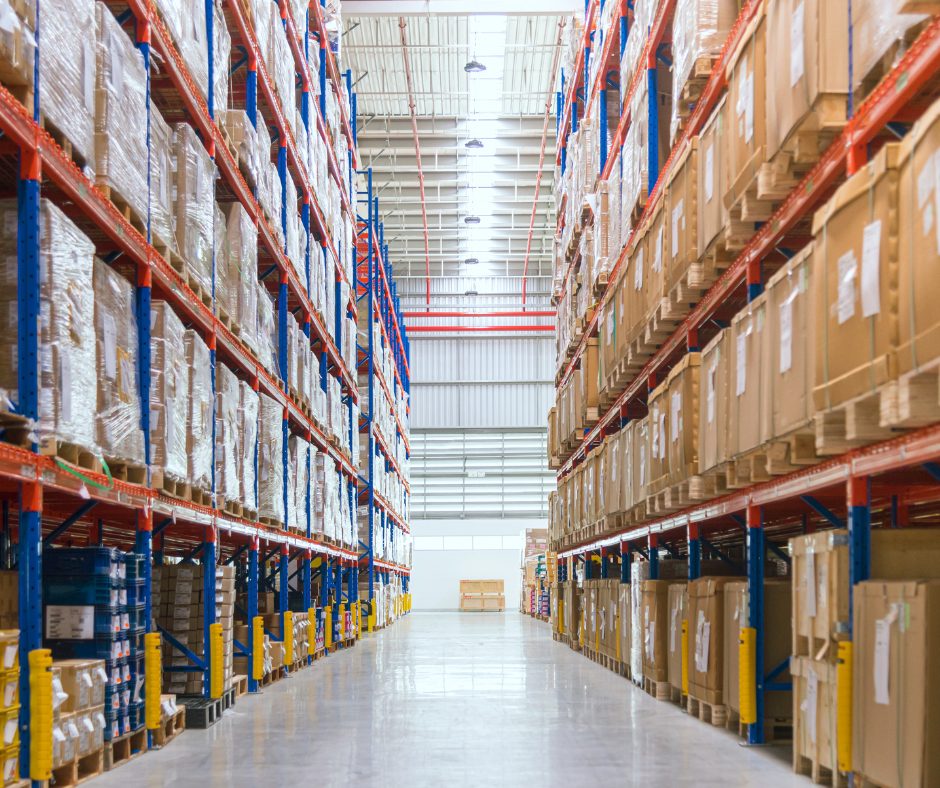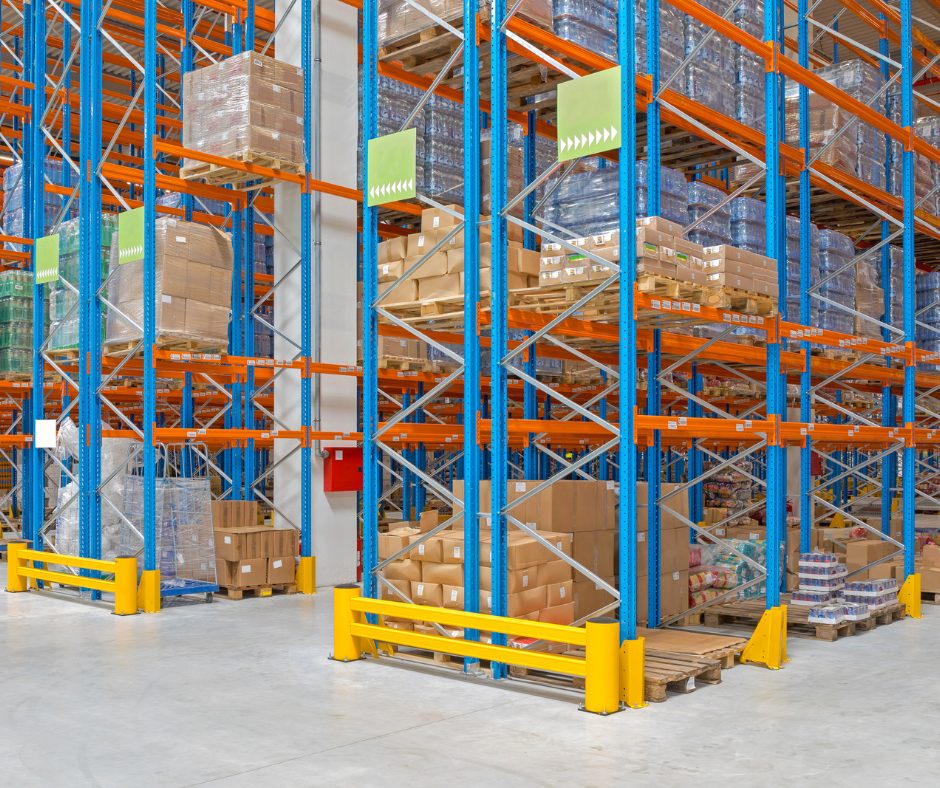Manufacturers and distributors face interconnected challenges on a daily basis. These challenges could be rising costs, increased complexity, growing customer demands, or global supply shortages caused by the COVID-19 pandemic. The expansion of omni-channel markets like Click-and-Collect and the rapid growth of e-commerce volumes compel them to not only change their sales approach but also redefine their customer base. Customers themselves add further pressure by seeking complete product customisation and personalisation.

The disruption of supply chains stemming from the occasional vulnerabilities of globalisation poses an unprecedented challenge when it comes to maintaining visibility into inventory, shipping, and tracking. This becomes more apparent when a business spans across several towns, states, and even countries. Supply-chain disruption complicates warehouse operations, and hinders manufacturers and distributors from staying competitive, minimising costs, and ensuring profitability. Ineffective order management, high labour costs, and inefficient asset utilisation exacerbate the problem.
Manufacturers and distributors need to reassess their warehouse-management practices, processes, and systems in order to be able to maintain operations as seamlessly as possible during disruptions. This reevaluation is crucial for enhancing warehouse productivity, improving visibility, and reducing costs.
Finding opportunities within each problem
While some companies don’t recognise that using outdated processes, practices, and systems directly contribute to the warehouse management problems, there are others who view these issues as opportunities to strengthen their market share. These forward-thinking companies are embracing advanced solutions that can revolutionise warehouse management.
These solutions enable them to achieve the following;
- the ideal order,
- reduce labor costs,
- and optimise space and equipment utilisation.
These solutions enhance warehouse operations to a whole new level by incorporating features like:
- inventory management,
- work and task management, radio frequency (RF),
- voice direction, plus many others.
They go beyond the limitations of traditional enterprise resource planning (ERP) systems, and empower businesses to excel operationally and drive profitable growth in today’s fiercely competitive markets.
What’s driving the market?

Over the past decade, customers’ influence and expectations of businesses have grown, placing greater demands on manufacturers. Customers now seek faster, more accurate, and personalised order deliveries, all at reduced costs. Manufacturers and distributors are now expected to fulfill orders within shorter notice periods compared to the past.
According to Capgemini, a global leader in consulting, technology service, and digital transformation: ‘The rise of next-day, same-day, and few-hour deliveries has established a standard of demand that puts new pressures on businesses. Due to these heightened expectations from customers, the entire supply chain is rapidly transforming from a functional approach to a global and interconnected network of data and processes’. Failure to properly label, package, or deliver orders may result in fines and chargebacks for companies.
Retailers now require more elaborate packaging, leading to increased demands in terms of boxing and delivery formats. However, intense competition (and the influence of major retailers) prevent suppliers from passing on the additional costs associated with these requirements. Furthermore, the definition of customers is rapidly evolving, causing manufacturers and distributors to struggle to keep up. They are expanding their reach to markets they may not have previously served, including:
- Online,
- counter sales,
- mobile apps,
- cross-industry collaborations,
- electronic data interchange (EDI),
- and even business-to-consumer (B2C) interactions.
At the same time, supply-chain management has become more challenging as companies source products, components, and materials on a global scale. Manufacturers who previously relied on regional or national sourcing now turn to Asia, Latin America, Eastern Europe, and other overseas locations. Similarly, companies are distributing their goods globally in order to enter new and emerging markets. Consequently, products must travel longer distances and be stored in more locations, amplifying visibility challenges and posing threats to achieving ‘perfect order’ delivery.

These challenges have been further exacerbated by the difficulties caused by the pandemic. Additionally, regulatory issues loom large. With high-profile recalls of various products, ranging from toys to dog food to ice cream, manufacturers face mounting pressure to track their products with even greater precision. Immediate access to data on lots, serial numbers, and shipping locations is essential for avoiding significant costs and potential legal penalties in the event of a recall. Lengthening supply chains further contribute to the risk of costly recalls.
Manufacturers and distributors are confronted with rising costs and complexities, which increase the demand for improved warehouse productivity. To remain competitive and profitable, these businesses must find ways to elevate warehouse performance. However, their existing enterprise resource planning (ERP) systems often lack the automated capabilities necessary to enhance operational visibility, improve market adaptability, and boost warehouse productivity.
Business solution
By investing in advanced warehouse management solutions, manufacturers and distributors can optimise product placement, prioritise tasks, establish productivity standards, and enhance logistics efficiency. These solutions manage the entire process of material flow—from receiving and put-away to cycle counting, picking, packing, and shipping. Unlike conventional warehouse management systems that focus solely on inventory location, advanced systems offer comprehensive management of material flow. They provide inventory visibility, enabling accurate allocation, fulfilment, and delivery of orders. Users can monitor the location, condition, and quantities of finished goods, components, and raw materials in the warehouse. Additionally, these features offer increased visibility and flexibility for:
- lot control,
- serial number capture,
- date code tracking,
- catch weights,
- inventory aging,
- and expiration-date management.
Order management
Efficient transactions: With an advanced warehouse management system, transactions are processed quickly and seamlessly, regardless of the sales channel. Users have easy access to all the necessary information, such as customer sales history, product details, photos, and available replacement options.

Work and task management
The system efficiently balances workloads and tasks with available resources. Multitasking improves productivity by using common workflows and combining related tasks. Grouping similar work orders and locations ensures timely processing while workers can complete tasks more efficiently.
Technology benefits
By integrating warehouse, labour, transportation management, and third-party billing into one solution, manufacturers and distributors gain complete supply chain visibility. This leads to better decision-making and faster execution. Modern technologies, like mobile and social collaboration, enhance efficiency and accuracy. User-friendly interfaces provide a seamless experience.
Winning in competitive markets
Implementing an advanced warehouse management system brings substantial improvements in performance. It strengthens order management, increases labour productivity, and maximises warehouse asset utilisation. In today’s global supply chains, businesses must focus on warehouse productivity to control costs and achieve growth. These investments offer a higher return by enhancing visibility, agility, and overall productivity. They provide a strong foundation for success in competitive markets.
Have a question about warehouse management? Get in touch below.


